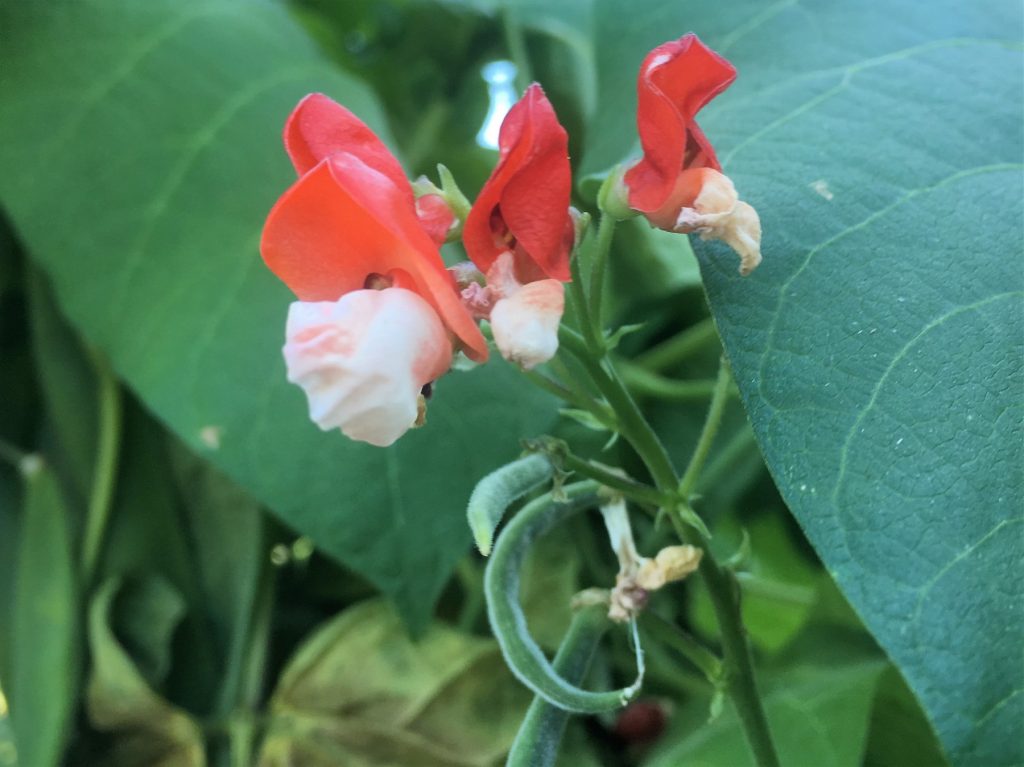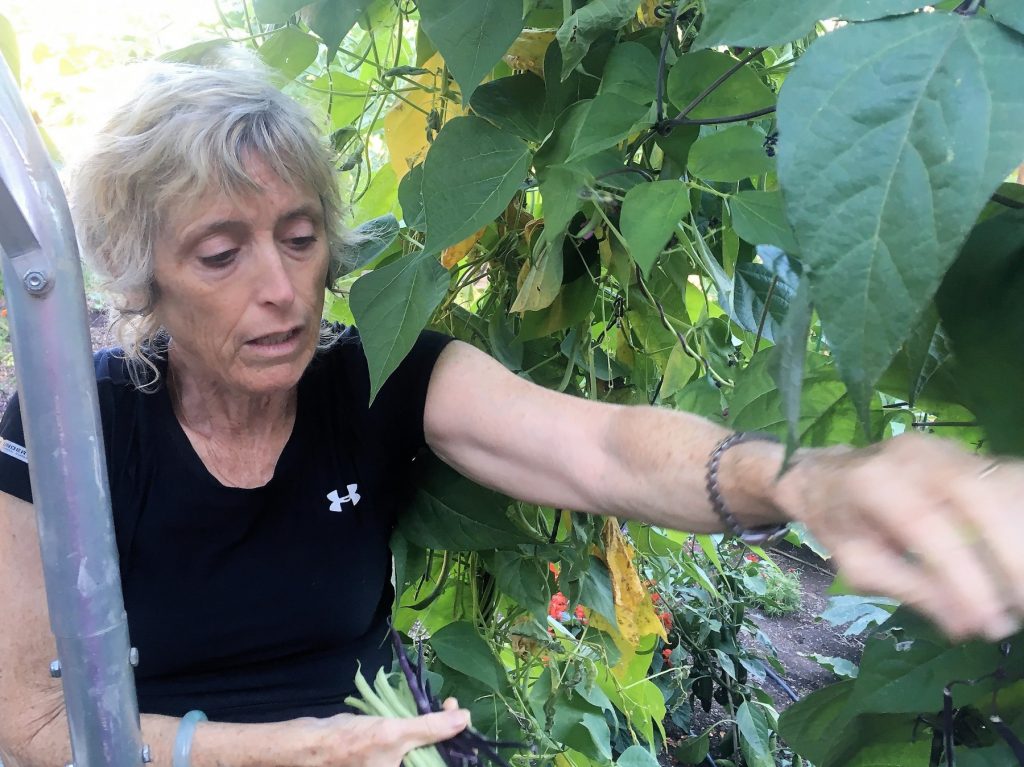
Stephanie Niedermyer is a bean farmer. Granted, hers is miniature-scale farming operation in her Eugene, Oregon backyard. But still, she manages to produce at least 26 different kinds of beans each summer. She says, “I’m a magpie, attracted to pretty bright things—that’s beans!”
A road trip to the Southwest was the catalyst for her bean-farming ambitions, Stephanie says. All the grocery stores in the Four Corners area displayed freshly harvested dried beans. “You don’t expect much from a dry bean, but I brought home a ten-pound bag of Anasazi,” she remembers. “And they were super fresh. Totally different flavor.”
Easy-Care for Beans
Stephanie has created a simple method to grow her beans. For pole bean support, Stephanie uses 20-foot sections of rebar. Each piece is bent in half, curving like giant old-fashioned hairpins. Two rebar make one tower, the curves crossing overhead at right angles and secured with heavy wire. The tower’s four feet are pushed into the soil and at the base of each, she plants four to six beans. “And then,” she says, “stand back.”

When pods are crackly, she harvests and dries the beans on recycled window screens. The bounty could end up drying in her garden room greenhouse, under the deck, or sometimes even in the upstairs guest room. When dry, the colorful beans go into the freezer—five pounds for each gallon bag. The taste, Stephanie says, is the same as freshly dried. Here are some of her favorites.
Six Towers of Diverse Varieties
Tower 1 – Scarlet runner They’re dual purpose, says Stephanie, to eat as snap beans or dry. Plus, “They attract hummingbirds big-time,” she points out. She grows several named varieties, such as pink-peachy Sunset and white and red Painted Lady.
Tower 2 – Snap “Usually some kind of skinny French bean,” Stephanie says, such as the new purple Carminat, which is even skinnier than usual, as well as her long-favored, dark green Emerite.

Tower 3 – Native American This tower has Hopi Red, Hopi Yellow, the black Trail of Tears—said to have made the horrific journey from Tennessee to the Oklahoma territory—and Stephanie’s favorite, the red- and white-spotted Anasazi. “They’re easy to shell and you don’t have to soak them.”
Tower 4 – Italian These include Mama’s Cannellini, Tongue of Fire, and Bingo.
Tower 5 – Heritage New England Cranberry grows here, along with Speckled Cranberry, which traveled from England circa 1825.
Tower 6 – Good Mother Stallard They’re small, rounded, red and white and, Stephanie notes, “Very prolific and easy to shell.”
Sources: Baker Creek Rare Seeds; Johnny’s Selected Seeds; Renee’s Garden; Seed Savers Exchange; Strictly Medicinal Seeds; Territorial Seed Company


